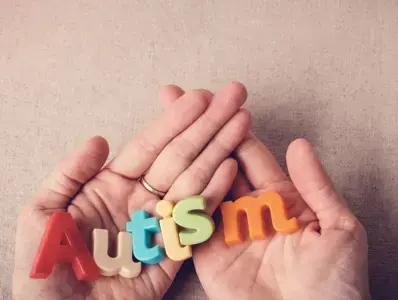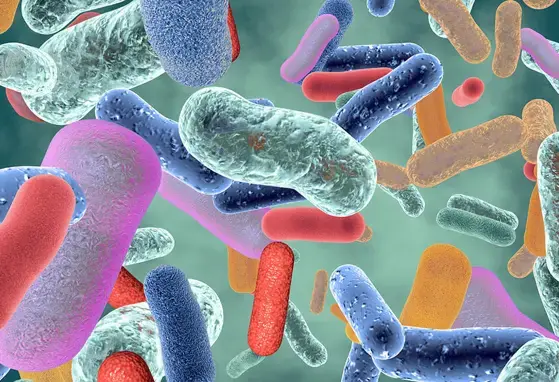Interview with Dr. Sylvia Doo - Autism Spectrum Disorder

Recently, we had the privilege of speaking with Dr Sylvia Doo. Dr Doo briefly reviewed the diagnosis and management of children with autism spectrum disorder (ASD), and discussed the roles of physicians, other healthcare professionals, parents, and teachers in their care. In particular, she deliberated about feeding and sleeping difficulties in these children. This article presents the highlights from the interview.
- Diagnosis and management principles for autism spectrum disorder (ASD)
- Feeding and sleeping difficulties in children with ASD

Dr Sylvia Doo
Paediatrician
Dr Doo Child Development and Assessment Centre
Specialist in Paediatrics, Hong Kong
Introduction
Throughout history, a child who did not relate well with others socially and who exhibited repetitive, obsessive actions was described as having autism.1 Autism spectrum disorder (ASD) is now recognized as a complex developmental disorder characterized by markedly impaired social interaction and communication and by restricted, stereotyped behaviours.2 The condition affects children, and persists through adulthood.3 Having a child with ASD can have a considerable impact on the lives of family members who care for the child.4 Increased understanding will serve to improve diagnosis and management.
- How common is ASD?
- What is ASD?
- How to diagnose?
- What are the management principles for ASD?
- Feeding difficulty in ASD?
- Sleep problems in ASD?
- Practical tips for healthcare professionals
- Final thoughts
How common is ASD?
According to the data from the Centers for Disease Control and Prevention, US, in 2012, the estimated prevalence of ASD in the US was 11.3/1,000 children aged 8 years, which translates into one case of ASD per 88 children.5 The estimated global median prevalence is 17/10,000 children (ie, one case per 588 children).6 Estimates were variable per geographic region, but available data from America, Europe and the Western Pacific appeared to be similar.6 From the Hong Kong registry, data collected from 1986 to 2005 estimated the incidence of ASD to be 5.49/10,000 children aged 0–4 years, and the prevalence at 16.1/10,000 children aged 0–14 years.7 It is generally believed that the local incidence and prevalence data align with the estimates from other regions in the world.
What is ASD?
The American Psychiatric Association's Diagnostic and Statistical Manual-IV, Text Revision (DSM-IV-TR) used the term "pervasive developmental disorders" (PDDs) to describe a class of disorders characterized by impairments in social interaction, communication skills, and a limited number of interests and activities (eg, inflexible adherence to rituals, repetitive motor actions, preoccupations with parts of objects).8 These disorders included autistic disorder, Rett's disorder, Asperger's disorder, childhood disintegrative disorder, and pervasive developmental disorder not otherwise specified (PDD-NOS).8 To increase the sensitivity and specificity of diagnostic criteria, the 5th edition of DSM (DSM-5), released in 2013, replaced PDDs with a single broad category of "autism spectrum disorder."2,9,10 Under the new diagnosis, the previously separate disorders fall under one condition but reflect different presentations of a spectrum.
According to DSM-IV-TR, the diagnosis of autistic disorder is based on the presence of a specified number of symptoms from each of three core domains: impairments in social interaction, impairments in communication, and restricted, repetitive, sterotyped patterns of behaviour, interests and activities.8 These criteria are similar to criteria from another widely used diagnostic guide, the ICD-10 Classification of Mental and Behavioural Disorders from the World Health Organization.11 In DSM-5, the diagnosis of ASD is made with only two core symptom domains, namely, the presence of deficits in social communication and interaction, and repetitive, restricted behaviours, interests and activities (Table).2,12 The new criteria also include the potential occurrence of "sensory behaviours" under the latter domain.12
Table. Core domains for diagnosis of ASD
|
DSM-IV-TR8 |
DSM-52,12 |
|
Qualitative impairments in social interaction |
Deficits in social communication and interaction: |
|
Qualitative impairments in communication |
|
|
Restricted, repetitive, stereotyped patterns of behaviour, interests, activities |
Restricted and repetitive behaviours, interests and activities |
How to diagnose ASD?
Diagnosis of ASD is a clinical process during developmental surveillance. At every well-child care visit, in addition to routine questions about the developmental milestones, paediatricians or family physicians should ask questions on core symptoms of ASD, including the child's social relatedness, verbal and non-verbal communication, play skills, and the presence of unusual, repetitive behaviours.13-15 Eliciting parental concerns about development and asking age-specific questions can provide important insights.15
Observations of the child by physicians and by parents should help to differentiate normal from ASD-specific behaviours. For example, normal behaviours include eye contact and calling for attention while finger-pointing at 12 to 14 months of age.15,16 Repetitive behaviours, due to the narrow interest of children with ASD, can manifest during play, such as, lining up toy cars and spinning their wheels.15 Behavioural impairments are subtle in higher functioning patients who have eye contact and normal speech. Impairments are also difficult to pick up in very young children of less than 2, or even 3 years of age, because behavioural presentations are heterogenous and language is not fully developed.15
Developmental surveillance by paediatricians is a gatekeeping system that can help pick the signs of ASD as early as possible
Several standardized screening tools have been developed to aid the clinician in diagnosis, such as the Autism Diagnostic Interview-Revised (ADI-R) and the Autism-Diagnostic Observation Schedule (ADOS).13 The ADI-R collects parental reports,17 while the ADOS uses different activities to elicit responses from patients and check for target behaviours.18 There are separate modules for each age group, with a recent addition of a toddler module for patients younger than 2 ½ years of age.19 In Hong Kong, clinicians commonly use the ADOS.
If screening raises a suspicion of ASD, a more thorough evaluation should be performed. Family history of ASD, especially if a sibling has already been diagnosed, and concerns about behaviour should prompt the clinician to schedule targeted visits at specific intervals (at 18 and 24 months, and any time as needed, eg, every 6 months) for further evaluation and planning early interventions.15 Engagement of other specialists (neurologists, geneticists, occupational and physical therapists, speech language pathologists) depends on the time of onset, symptom severity, and underlying or comorbid condition.15,16 Definitive diagnosis is usually made by a team with expertise in ASD.15
What are the management principles for ASD?
The primary goals of treatment are to maximize the child's ultimate functional independence and quality of life by minimizing the core ASD features, facilitating development and learning, promoting socialization, reducing maladaptive behaviours, and educating and supporting families.20 Behavioural therapy that includes a structured educational plan adjusted to each child's strengths and weaknesses can improve daily living, and social and communication skills.13,20 Special childcare workers and teachers provide additional support. Other healthcare professionals provide anticipatory guidance, education, training and emotional support.20
Medication is prescribed for comorbid conditions, not for the core symptoms that define the diagnosis of ASD. Medications target associated symptoms of depression, anxiety and sleep problems. They can also be useful for attention problems.20 Furthermore, children with underlying medical conditions, such as epilepsy, should be prescribed pharmacological treatment.13,20
Early identification and early intervention provide long-term benefit
Parents are worried about poor growth; however, despite feeding challenges, children will eat eventually with assistance and training, and receive adequate nutritional intake
Final thoughts?
Contrary to the common misconception held by parents, ASD should not be regarded as a terminal disease. It is important to understand each child's characteristics so that appropriate interventions can be provided. Although the condition is not reversible, patients with ASD can be helped if they are correctly diagnosed and receive appropriate behavioural training. Supportive treatment and counselling can help both patients and their families. It is possible for children with ASD to adapt and integrate into the society, albeit at their own pace and with proper support.
WYE-EM-090-MAR-14
Reference
- Wolff S. The history of autism. Eur Child Adolesc Psychiatry 2004;13(4):201-208.
- American Psychiatric Association. Highlight of Changes from DSM-IV-TR to DSM-5. DSM-5 Development. Available at: http://www.dsm5.org. Accessed 31 January 2014.
- Centers for Disease Control and Prevention. Facts about ASDs. Available at: http://www.cdc.gov. Accessed 11 January 2014.
- Karst JS, Van Hecke AV. Parent and family impact of autism spectrum disorders: a review and proposed model for intervention evaluation. Clin Child Fam Psychol Rev 2012;15(3):247-277.
- Centers for Disease Control and Prevention. Prevalence of autism spectrum disorders—Autism and Developmental Disabilities Monitoring Network, 14 sites, United States, 2008. MMWR Surveill Summ 2012;61(3):1-19.
- Elsabbagh M, et al. Global prevalence of autism and other pervasive developmental disorders. Autism Res 2012;5(3):160-179.
- Wong VC, Hui SL. Epidemiological study of autism spectrum disorder in China. J Child Neurol 2008;23(1):67-72.
- Centers for Disease Control and Prevention. American Psychiatric Association. DSM-IV-TR. Autism Spectrum Disorders (ASDs) Diagnostic Criteria. Available at: http://www.cdc.gov. Accessed 31 January 2014.
- American Psychiatric Association. Highlight of Changes from DSM-IV-TR to DSM-5. DSM-5 Development. Available at: http://www.dsm5.org. Accessed 31 January 2014.
- Huerta M, et al. Application of DSM-5 criteria for autism spectrum disorder to three samples of children with DSM-IV diagnoses of pervasive developmental disorders. Am J Psychiatry 2012;169(10):1056-1064.
- World Health Organization. The ICD-10 Classification of Mental and Behavioural Disorders. Diagnostic Criteria for Research. Geneva: 1992.
- The National Autistic Society. Changes to autism and Asperger syndrome diagnostic criteria. Available at: http://www.autism.org.uk. Accessed 31 January 2014.
- Volkmar F, et al. Practice parameter for the assessment and treatment of children and adolescents with autism spectrum disorder. J Am Acad Child Adolesc Psychiatry 2014;53(2):237-257.
- Committee on Children With Disabilities. American Academy of Pediatrics: The pediatrician's role in the diagnosis and management of autistic spectrum disorder in children. Pediatrics 2001;107(5):1221-1226.
- Johnson CP, Myers SM; American Academy of Pediatrics Council on Children With Disabilities. Identification and evaluation of children with autism spectrum disorders. Pediatrics 2007;120(5):1183-1215.
- Carbone PS, et al. Primary care for children with autism. Am Fam Physician 2010;81(4):453-460.
- Lord C, et al. Autism Diagnostic Interview-Revised: a revised version of a diagnostic interview for caregivers of individuals with possible pervasive developmental disorders. J Autism Dev Disord 1994;24(5):659-685.
- Lord C, et al. The autism diagnostic observation schedule-generic: a standard measure of social and communication deficits associated with the spectrum of autism. J Autism Dev Disord 2000;30(3):205-223.
- Luyster R, et al. The Autism Diagnostic Observation Schedule-Toddler Module: A new module of a standardized diagnostic measure for autism spectrum disorders. J Autism Dev Disord 2009;39(9):1305-1320.
- Myers SM, Johnson CP; American Academy of Pediatrics Council on Children With Disabilities. Management of children with autism spectrum disorders. Pediatrics 2007;120(5):1162-1182.
- National Center for Medical Home Implementation. American Academy of Pediatrics. Nutrition and Eating Problems Handout. 2nd edition. Available at: http://medicalhomeinfo.org. Accessed 31 January 2014.
- Cermak SA, et al. Food selectivity and sensory sensitivity in children with autism spectrum disorders. J Am Diet Assoc 2010;110(2):238-246.
- Washington State Department of Health. Nutrition Interventions for Children with Special Health Care Needs, 3rd Edition.. Available at: http://here.doh.wa.gov. Accessed: 21 February 2014.
- Doo S, Wing YK. Sleep problems of children with pervasive developmental disorders: Correlation with parental stress. Dev Med Child Neurol 2006;48(8):650-655.
If you liked this post you may also like

[Guideline Summary] S3 guidelines on allergy prevention

[Literature library] Coronavirus Disease 2019 (COVID-19) mRNA-based vaccination and breastfeeding

![[Literature Library] Epitope-Specific Response of Human Milk sIgA in COVID-19 Recovered Women](/sites/default/files/styles/card_m_mobile/public/2021-07/205_COVID-opt.jpg.webp?itok=jNfgf4cf)
[Literature Library] Epitope-Specific Response of Human Milk sIgA in COVID-19 Recovered Women